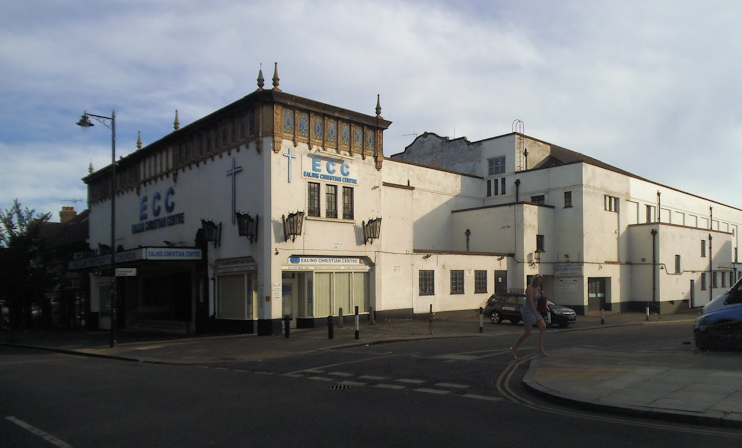Northfields
Northfields, Ealing
The south-western corner of Ealing, with a history of fruit-growing and tightrope-walking – and street names that reflect this

From the 14th century this area was part of the manor of Coldhall, or West Ealing. Great and Little Northfields were two large fields in the late Middle Ages, lying in the extreme west of Ealing parish.
By the mid-17th century Northfield Lane (later Avenue) linked Little Ealing with the road to Uxbridge. The manor house of Coldhall probably stood near the southern end of the lane at that time. The Plough inn was in existence by 1722 but has since been rebuilt more than once.
An orchard had been planted in Little Northfield by 1738 and in the 19th century the Steel family of market gardeners grew apples across the entire area on an almost industrial scale. In the 1870s the family built a fruit-packing warehouse, which survived until recently at the corner of Northcroft Road and Northfield Road.
The great French acrobat and tightrope walker Charles Blondin lived in Northfields from 1886 until his death in 1897 in a villa he called Niagara House, a name that commemorated his numerous crossings of Niagara Falls on a tightrope, once stopping midway to cook an omelette and once carrying his manager on his back. Niagara House stood opposite the Plough, probably on the site of Coldhall manor house.

With the coming of electric trams to Uxbridge Road in 1901, the Steels turned property developers and began to grub up the fruit trees and lay out streets, initially between Uxbridge Road and Leighton Road. Julien Road, Wellington Road and Bramley Road, south of Northfields station, are named after cooking apples that the family cultivated.
Northfield halt opened after the District Railway was electrified in 1908 and was rebuilt as Northfields and Little Ealing station in 1911. When Piccadilly line services began the station was rebuilt again and given its present name, while a maintenance depot opened to the west.
Niagara House was demolished in the early 1930s and part of its grounds became Northfields recreation ground, now renamed Blondin Park. The adjacent Blondin nature area has a community orchard, wildflower meadow and pond – but no waterfall.
The Avenue cinema was built in 1932 on Northfield Avenue and nicknamed the ‘Spanish City’ for its Moorish interior. Later an Odeon and then a Coronet, the cinema was rescued from disuse by its conversion to a nightclub in 1981. It has since become the Ealing Christian Centre, which is shown in the photo at the top of this article.*
The Northfield ward is the most prosperous in the borough, with high levels of employment, educational attainment and home ownership. At the 2011 census, just over half the ward’s residents were of white British heritage, a proportion closely reflected at Fielding primary school on Wyndham Road.
